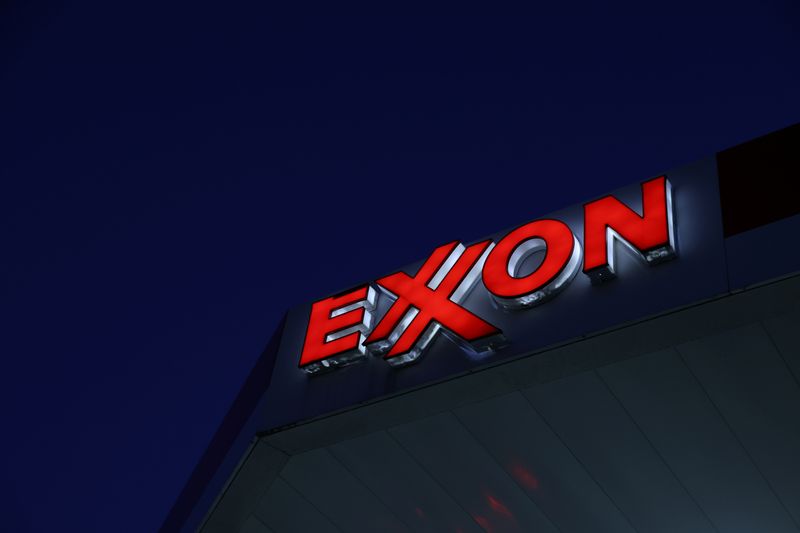By Sabrina Valle
HOUSTON (Reuters) - Exxon Mobil Corp (NYSE:XOM)'s fledging low carbon energy business on Wednesday struck its first commercial carbon storage deal under an effort to target a projected multi-trillion market by 2050.
The agreement with the world's top manufacturer of ammonia CF Industries Holdings (NYSE:CF) to bury carbon dioxide (CO2) at an Exxon site in Louisiana kicks off an unusual business for the oil giant: making money from burying gases for companies looking to reduce their own atmospheric emissions.
Exxon says it will transport and store underground 2 million metric tons of CO2 per year produced starting in 2025, when CF Industries opens a $200 million CO2 compression facility in Louisiana to process emissions from its ammonia production.
The deal is "a milestone" for Exxon's division started in February 2021, said Dan Ammann, the former General Motors (NYSE:GM) president who runs Exxon's Low Carbon Solutions unit. He declined to comment on financial terms of the deal with CF Industries.
"We see a tremendous opportunity to build a new business," Ammann told Reuters.
The volumes of carbon dioxide that CF and Exxon could prevent from going to the atmosphere annually will be the equivalent of switching 700,000 gasoline-powered cars to electric vehicles (EV), Ammann said.
Exxon signed a parallel agreement to use Enlink Midstream's network to transport the CO2 to the storage site.
While critics view carbon sequestration as greenwashing by polluters, Exxon says the business can achieve double-digit percentage returns while limiting planet-warming gases.
Exxon's energy transition strategy is focused on curbing CO2 while increasing its oil and gas production - unlike European firms charting paths away from fossil fuels and toward renewable solar and wind power.

The hydrocarbon-focused strategy and this year's surge in oil and gas prices have helped Exxon shares rise about 60% year to date, far ahead of Shell (LON:RDSa) Plc and BP (NYSE:BP)'s.
The Louisiana initiative is part of the company's planned $15 billion investment by 2027 in low carbon operations. About $9 billion of that will go toward reducing emissions at its own sites, with the remainder to carbon capture, hydrogen and biofuels.